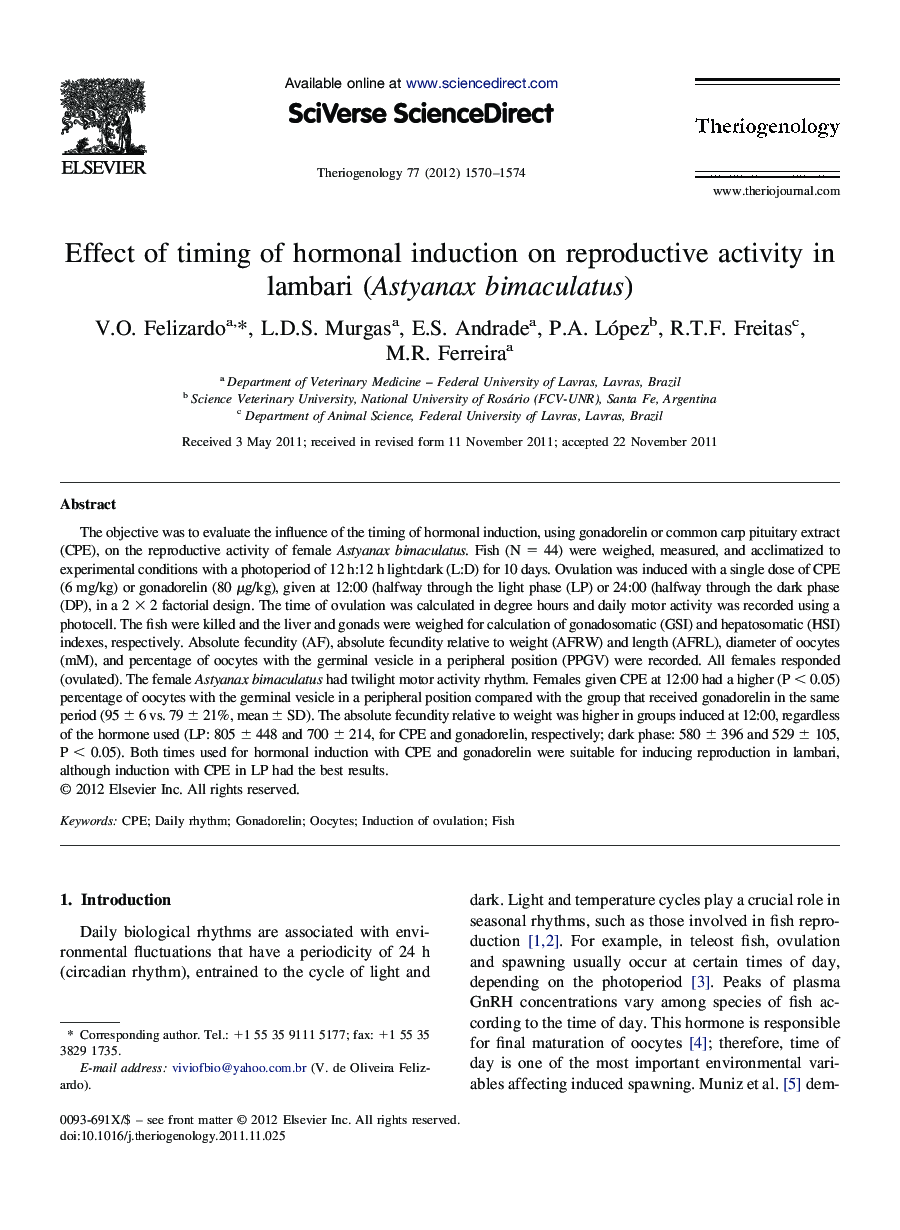| Article ID | Journal | Published Year | Pages | File Type |
|---|---|---|---|---|
| 10892906 | Theriogenology | 2012 | 5 Pages |
Abstract
The objective was to evaluate the influence of the timing of hormonal induction, using gonadorelin or common carp pituitary extract (CPE), on the reproductive activity of female Astyanax bimaculatus. Fish (N = 44) were weighed, measured, and acclimatized to experimental conditions with a photoperiod of 12 h:12 h light:dark (L:D) for 10 days. Ovulation was induced with a single dose of CPE (6 mg/kg) or gonadorelin (80 μg/kg), given at 12:00 (halfway through the light phase (LP) or 24:00 (halfway through the dark phase (DP), in a 2 à 2 factorial design. The time of ovulation was calculated in degree hours and daily motor activity was recorded using a photocell. The fish were killed and the liver and gonads were weighed for calculation of gonadosomatic (GSI) and hepatosomatic (HSI) indexes, respectively. Absolute fecundity (AF), absolute fecundity relative to weight (AFRW) and length (AFRL), diameter of oocytes (mM), and percentage of oocytes with the germinal vesicle in a peripheral position (PPGV) were recorded. All females responded (ovulated). The female Astyanax bimaculatus had twilight motor activity rhythm. Females given CPE at 12:00 had a higher (P < 0.05) percentage of oocytes with the germinal vesicle in a peripheral position compared with the group that received gonadorelin in the same period (95 ± 6 vs. 79 ± 21%, mean ± SD). The absolute fecundity relative to weight was higher in groups induced at 12:00, regardless of the hormone used (LP: 805 ± 448 and 700 ± 214, for CPE and gonadorelin, respectively; dark phase: 580 ± 396 and 529 ± 105, P < 0.05). Both times used for hormonal induction with CPE and gonadorelin were suitable for inducing reproduction in lambari, although induction with CPE in LP had the best results.
Related Topics
Life Sciences
Agricultural and Biological Sciences
Animal Science and Zoology
Authors
V.O. Felizardo, L.D.S. Murgas, E.S. Andrade, P.A. López, R.T.F. Freitas, M.R. Ferreira,
